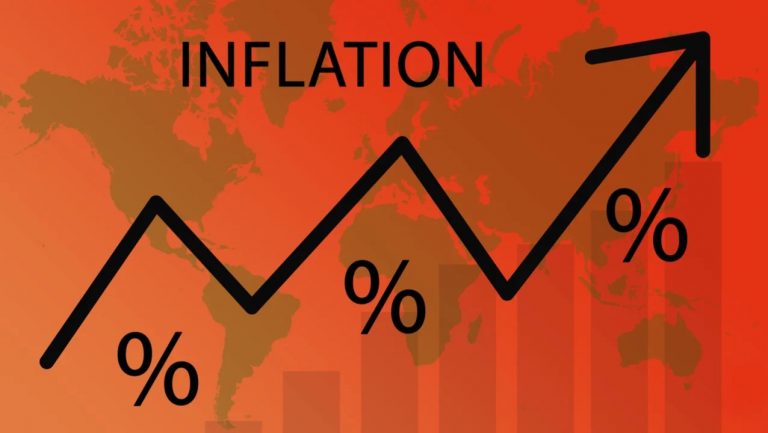
The latest data from the Bureau of Labor Statistics shows that the annual inflation rate in the United States dropped to 3.1% in December 2023, down from 4.2% in November. This is the lowest level since June 2021, when inflation was 2.9%. The decline in inflation was mainly driven by lower prices for energy, transportation, and food, which offset the increases in housing, medical care, and education. The core inflation rate, which excludes volatile food and energy prices, also fell to 2.7% in December, from 3.0% in November.
The decrease in inflation is a welcome sign for the US economy, which has been struggling with the effects of the COVID-19 pandemic, supply chain disruptions, labor shortages, and rising consumer demand. The Federal Reserve has been trying to balance its dual mandate of maintaining price stability and full employment, while also supporting the economic recovery.
The Fed has signaled that it will start tapering its monthly bond purchases in early 2024 and may raise its benchmark interest rate later that year, depending on the inflation outlook and the labor market conditions.
Register for Tekedia Mini-MBA edition 19 (Feb 9 – May 2, 2026): big discounts for early bird.
Tekedia AI in Business Masterclass opens registrations.
Join Tekedia Capital Syndicate and co-invest in great global startups.
Register for Tekedia AI Lab: From Technical Design to Deployment (next edition begins Jan 24 2026).
The lower inflation rate may also ease some of the pressure on consumers, who have been facing higher costs for many goods and services. However, some analysts warn that inflation may not be over yet, as there are still some factors that could push prices higher in the coming months.
These include the ongoing supply chain issues, the new Omicron variant of the coronavirus, the expiration of some pandemic relief programs, and the potential fiscal stimulus from the Biden administration and Congress. Therefore, consumers and businesses should remain vigilant and prepared for possible changes in the inflation environment.
What caused this sharp decline in inflation? There are several possible explanations, but two main factors stand out: the Federal Reserve’s interest rate hikes and the falling energy prices.
The Federal Reserve, which is the central bank of the US, has the dual mandate of maintaining price stability and maximum employment. To achieve these goals, it uses various tools, such as setting the federal funds rate, which is the interest rate that banks charge each other for overnight loans. The federal funds rate affects other interest rates in the economy, such as mortgages, credit cards, and loans, as well as the money supply and inflation expectations.
In response to the rising inflation and strong economic recovery from the pandemic-induced recession, the Federal Reserve started to tighten its monetary policy in late 2022. It announced four interest rate hikes in 2022, raising the federal funds rate from 0.25% to 1.25%. It also signaled that it would continue to raise rates in 2023, with three more hikes expected by June. The Federal Reserve’s actions have had the desired effect of cooling down the inflationary pressures and reducing the demand for goods and services.
Another major factor that contributed to the lower inflation in December was the decline in energy prices. Energy is one of the main components of the CPI basket, accounting for about 7% of its weight. Energy prices are volatile and depend on various factors, such as supply and demand, geopolitics, weather, and technology. In December 2023, energy prices fell by 6.8%, driven by a drop in gasoline prices of 11.9%. This was partly due to the release of strategic oil reserves by several countries, including the US, in November 2023, which increased the global oil supply and lowered its price.
The lower energy prices also had a spillover effect on other categories of the CPI basket, such as transportation and food. Transportation costs fell by 1.9% in December, mainly due to lower airfares and car rental fees. Food costs rose by only 0.2%, compared to 0.9% in November, as lower energy costs reduced the costs of production and transportation of food items.
The fall in inflation in December was welcome news for consumers and businesses, who have been struggling with higher costs and lower incomes for months. However, it is too early to celebrate or relax. Inflation is still above the Federal Reserve’s target of 2%, and there are still many uncertainties and risks that could push it higher again. For example, the new Omicron variant of Covid-19 could disrupt global supply chains and demand patterns; labor shortages and wage pressures could increase production costs; geopolitical tensions could affect oil markets; and inflation expectations could become unanchored.
Therefore, it is important to monitor inflation closely and be prepared for possible changes in its direction and magnitude. Inflation can have significant impacts on economic growth, income distribution, financial stability, and social welfare. Understanding its causes and effects can help consumers and businesses make better decisions and plan ahead.



